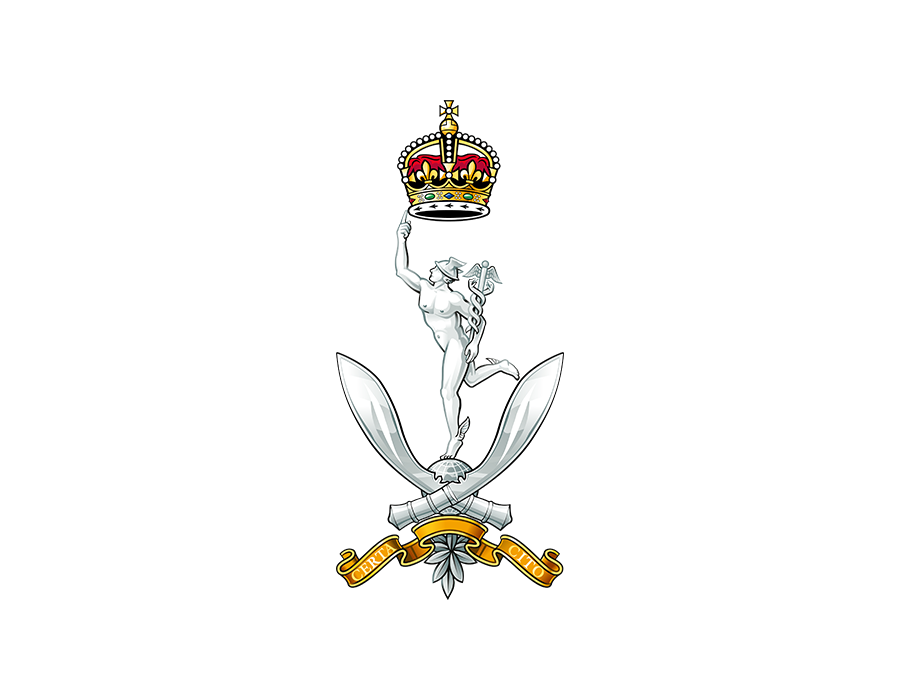
Who we are
The Queen’s Gurkha Signals (QG SIGNALS) is a regular unit of the Royal Corps of Signals, one of the combat support arms of the British Army. Together with The Royal Gurkha Rifles, the Queen’s Gurkha Engineers, the Queen’s Own Gurkha Logistic Regiment, the Band of the Royal Gurkha Rifles and the Gurkha Staff and personnel Support they form part of the Brigade of Gurkhas. QGS was formed during The Malayan Emergency to support the 17th Gurkha Division.
The first Gurkha signallers would have been those employed within the Corps of Engineers within the Indian Army; during the First World War this arrangement was formalised, with whole companies of Gurkha signallers being formed within each of the three Indian Corps of Sappers and Miners. In 1920 these Companies were formed into the Indian Signal Service, each one being allocated a letter designator. In 1921 Gurkha signallers assisted with the state visit to Nepal of HRH The Prince of Wales and in 1923 Gurkha signallers were committed to operations on the NW Frontier. In 1924 it was announced that Gurkha Signallers were to waste out.
Gurkha Royal Signals
In 1948, as part of the new 17 Gurkha Infantry Division which was being created to deal with the Communist uprising in Malaya, Major Cox was tasked with the creation of Gurkha Signals units to support each of the Division’s four Brigades. With his small cadre of Royal Signals personnel and a small number of signals NCOs from the four Gurkha Regiments that transferred to the British Army, Major Cox set about the creation of a training organisation that could take a new Gurkha recruit and later deliver an ‘Operator Wireless and Line’, a ‘Lineman’ or ‘Despatch Rider’. This first intake of 102 soldiers’ training was completed at the new Gurkha Signals Training and Support Wing on the 1st of August 1950.
These Gurkha tradesmen were passed across to Major Lionel Gregory and Second Lieutenant Hamish Patterson who were forming the first Brigade Signal Squadron, with its detachments named after towns and districts in Nepal. Thus Gurkha Royal Signals was born. On 18 Dec 50 the first Gurkha Royal Signals squadron was declared fully trained at a parade taken by Major General Headley, who sent them on their way with the word “You will not fail”. This became 48th Brigade Signal Squadron and it deployed to Kuala Lipis; once there, it immediately sent detachment “Baglung” to support 10 GR in Bentong.
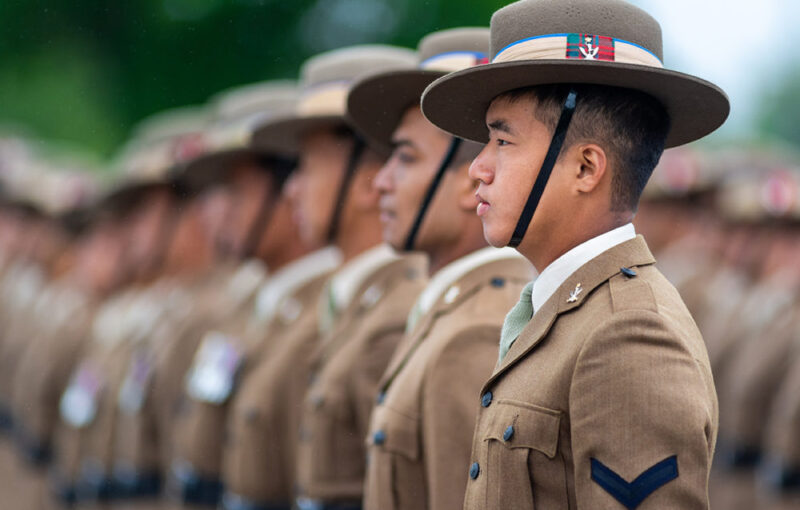
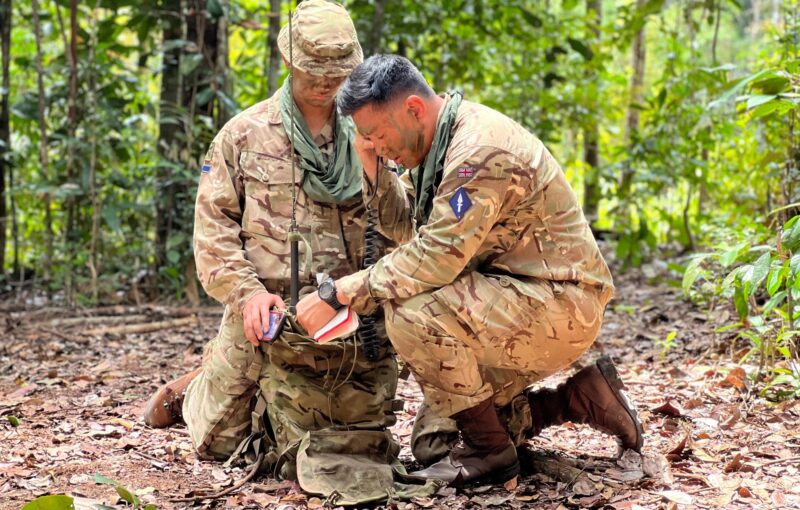
The Queen’s Gurkha Signals Squadrons are located across the UK.
- 242 Gurkha Signal Squadron – Stafford
- 246 Gurkha Signal Squadron – Perham Down
- 247 Gurkha Signal Squadron – Stafford
- 248 Gurkha Signal Squadron – Stafford
- 249 Gurkha Signal Squadron – Bulford
- 250 Gurkha Signal Squadron – Bramcote
- Brunei Signal Troop
- Nepal Signal Troop
- Plus a number of small teams supporting the Army around the world
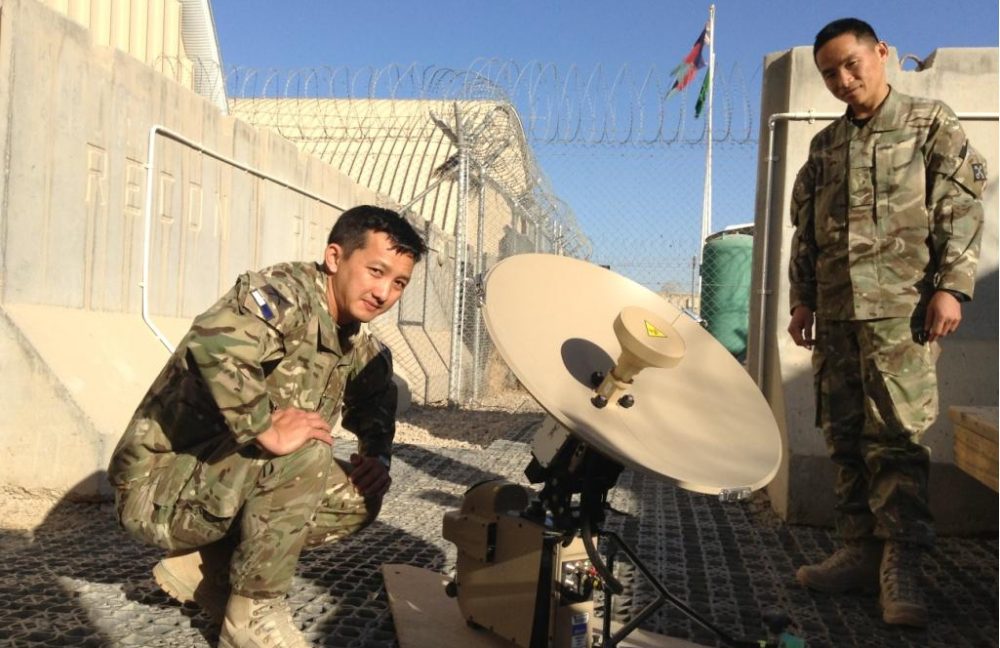
The first Gurkha Major was Major Parsuram Gurung MBE (ex 2GR). In 1952 a Regimental HQ was created in a new home in Kuala Lumpur; named “Lamjung Camp” after the home district of the first Gurkha Major. It was here that Major Gregory, with Captain Able Dacre as his adjutant, set about creating many of the Regimental customs and traditions, including its uniform and the Pipes and Drums, ensuring that they reflected both its Brigade of Gurkhas and Royal Signals heritage. As more sub units were created to support other brigades, Lieutenant Colonel Gregory then took command of the newly formed 17 Gurkha Divisional Signals Regiment. The unit was given its own cap badge on a parade on 23 Sep 54 by Major General LECM Perowne CB CBE, Major General, Brigade of Gurkhas. This day has become the Regimental Birthday and his speech on that day included the words:
“By your badge men shall know you. By your loyalty, by your behaviour and by your technical skill they will judge you as men and measure your efficiency as soldiers.”
Gurkha Signals
On the 28th of September 1955 the Regiment was formally incorporated into the Brigade of Gurkhas and its title was changed to “Gurkha Signals”.
Over the next few years, the Regiment continued to support operations in Malaya but also sent its first squadron to Hong Kong. In 1962 it deployed men at short notice to Brunei, eventually having two squadrons there on operations during the Indonesian Confrontation. This included a troop as part of the Gurkha Independent Parachute Company supporting Special Forces’ long-range patrols deep within the jungle.
In 1957 an affiliation was granted by Army Order between the 51st (Highland) Divisional Signals Regiment, Royal Corps of Signals (Territorial Army) to the 17th Gurkha Divisional Signals Regiment. In 1958 an affiliation was granted by Army Order between Gurkha Signals and the Royal Corps of Signals.
In 1970 the Regimental HQ moved from Sereban in Malaysia to Nee Soon Camp in Singapore, then in 1971 it disbanded and reformed at Sek Kong in Hong Kong as Regimental HQ Gurkha Signals.
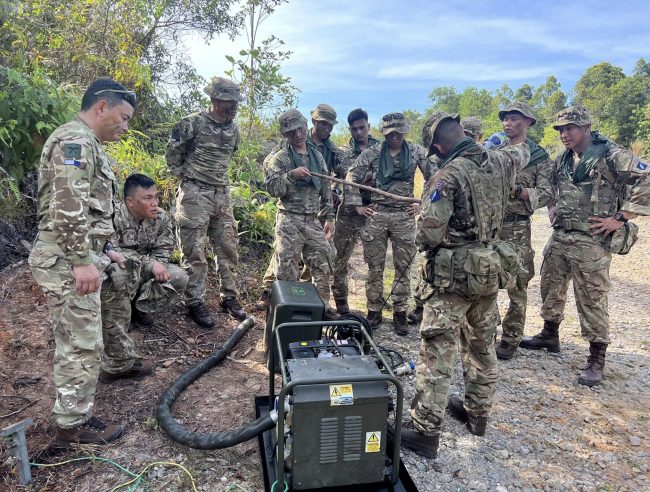
Queen’s Gurkha Signals
Hong Kong saw Gurkha Signals dealing with illegal immigrants and influxes of Vietnamese boat people, typhoons and tension created by Chinese sabre rattling on the border. In recognition of its efforts since formation and the title of its affiliated unit (Royal Signals), on 20 Apr 77, Her Majesty the Queen granted the use of a Royal Title and officially authorised the change of name to “Queen’s Gurkha Signals”.
By this time three Gurkha Signal Squadrons existed; 246, 247 and 248 and by 1983 a full Regiment was based in Hong Kong. In the 1980’s the Regiment developed its prowess at shooting (many of its soldiers have become Army 100 shots) and fundraising for the Gurkha Welfare Trust, starting the annual Exercise Trailwalker in Hong Kong before moving it very successfully to UK.
In preparation for the withdrawal from Hong Kong and reduction in the size of the Brigade of Gurkhas, 250 Gurkha Signal Squadron formed in UK as part of 30th Signal Regiment, initially at Blandford before moving to its current home at Bramcote. This also houses the Regimental HQ. Since then 246 Gurkha Signal Squadron has reformed at York (as part of 2nd Signal Regiment) and 248 Gurkha Signal Squadron at Stafford (as part of 22nd Signal Regiment).
In 2018 247 Gurkha Signal Squadron reformed (as part of 16th Signal Regiment) taking the Regiment to over 500 strong, with other posts in a variety of different units of the British Army. Queen’s Gurkha Signals soldiers participate in just about all UK military operations, providing high-quality communications and information services with their state-of-the-art equipment.
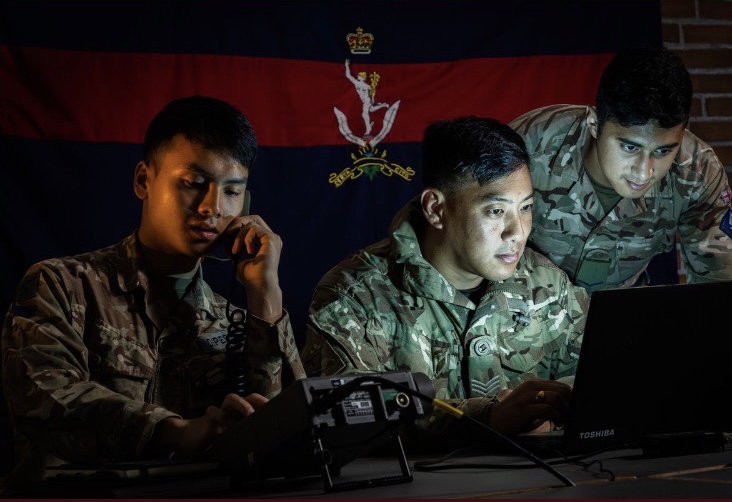
Queen’s Gurkha Signals Trade Structure
QG SIGNALS trainee Signallers undergo 13 weeks induction training in Bramcote, the home of QG SIGNALS. The induction training aims to remind, revise and asses their academic abilities, military values, and culture to understand their suitability for trade allocation before initial trade training in Defence School of Communication Information Systems, Blandford. The outcome of induction training package will be selecting the right individuals on three career employment groups that are available for QG SIGNALS:
Regimental Headquarters (RHQ)
Based at Gamecock Barracks Bramcote along with RHQ 30th Signal Regiment. Commander QG SIGNALS is also the Commanding Officer of 30th Signal Regiment. They ensure the wider employment opportunities throughout Royal Signals. It also advises Royal Signals, HQ Brigade of Gurkhas and APC Glasgow on the employment of QG SIGNALS within the Corps.
RHQ is responsible for all Regimental matters and issues, particularly Gurkha Welfare and ensuring Regimental ethos and Kaida (traditions) are maintained. RHQ QG SIGNALS is also responsible for organising events such as sport the Regimental birthday parade and annual reunion, Trailwalker UK, attestation and commissioning parades and the religious and other Nepali festivals celebrated each year within the regiment.
RHQ is also responsible for the introduction of new recruits into the Regiment.
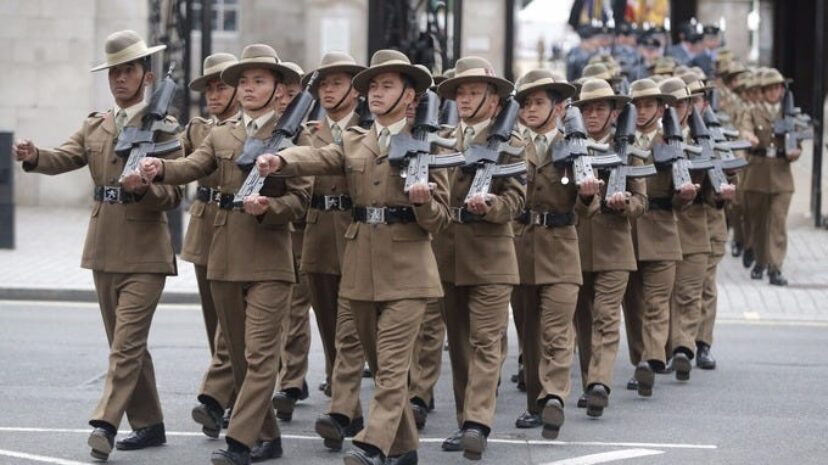
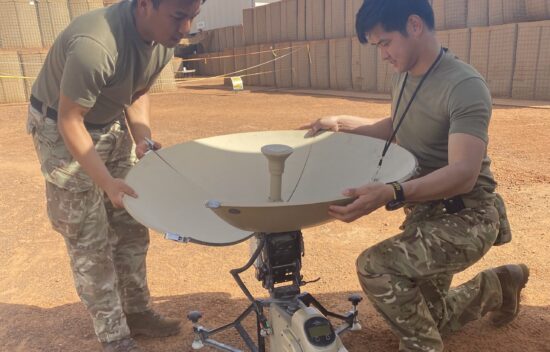
Networks Engineer
Networks Engineer is the largest trade in the Queen’s Gurkha Signals and their main role is to prepare, configure, deploy and maintain operational and tactical communication systems to ensure frontline troops and the commanders can communicate on Exercises and Operations worldwide. Their initial phase 3 course at the Defence School of Communication and Information System (CIS) lasts 28 weeks and covers various modules such as CCNA, CompTIA A+, Microsoft (Windows 10), ITIL foundation, Cyber foundation, and Radio principle. These courses enable them to engineer a range of systems including military satellite systems, radios, computer networks and mobile communications as well as support a range of software applications and ICT.
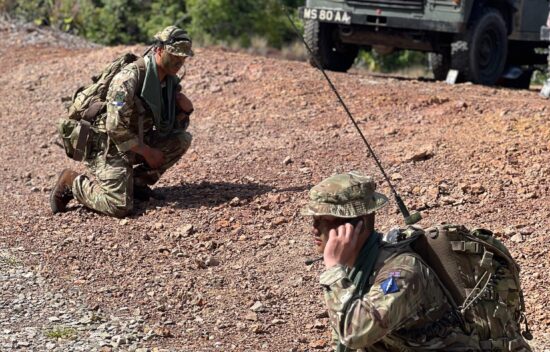
Information Services Engineer
Information Services Engineer are trained to install, configure, maintain and repair the communication networks and information services. Their initial phase 3 course at the Defence School of CIS lasts 30 weeks and covers various modules such as CompTIA Server+, CompTIA Network, Microsoft, CISCO, UNIX, SQL, Database, ITIL, Cyber foundation, electronic principle and many more. These courses provide a fundamental knowledge to operate and configure applications and data services.
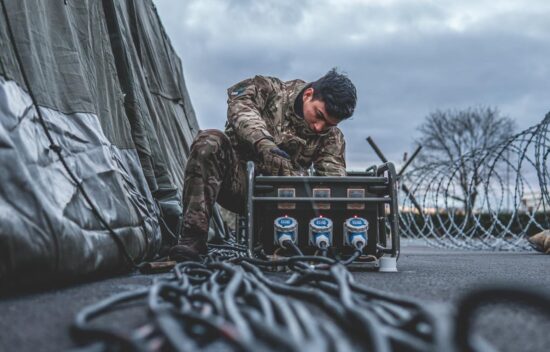
Power Engineer
Power Engineers are the key experts to install, maintain and repair various field-distribution power supplies and lighting. They are responsible for the mechanical and electrical repair of the deployable power generation systems. Their initial phase 3 course at the Defence School of CIS lasts 19 weeks and covers various modules such as Electronic Engineering Principle, Health and Safety Workshop, Practical Tool Construction, Engine theory, ITIL and Cyber foundation. These courses enable them to establish and maintain continuous power supplies to deployable CIS in a variety of exercises and operations.



